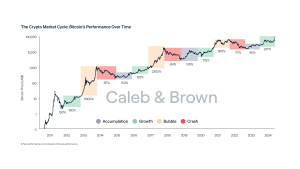AI in Stock Trading: A Comprehensive Guide
Unlock the secrets of AI-powered stock trading! Learn how sophisticated algorithms analyze markets, predict trends, and help you make smarter investment decisions. Navigate the exciting world of AI in finance and gain a competitive edge. Start your journey to financial success today!
The integration of artificial intelligence (AI) into the financial markets is rapidly transforming how stocks are traded. Sophisticated algorithms analyze vast datasets, identifying patterns and predicting market movements with unprecedented speed and accuracy. This presents both significant opportunities and considerable challenges for investors. Understanding the nuances of AI stock trading is crucial for navigating this evolving landscape, and this guide aims to provide a thorough exploration of the subject.
Understanding the Fundamentals of AI in Stock Trading
At its core, AI stock trading relies on machine learning algorithms. These algorithms learn from historical data, identifying correlations and trends that may not be apparent to human analysts. Different types of algorithms are employed, each with its strengths and weaknesses. Some focus on predicting price movements based on technical indicators, while others incorporate fundamental analysis, news sentiment, and even social media data. The complexity and sophistication of these algorithms are continually improving, leading to increasingly accurate predictions and faster execution speeds.
Types of AI Algorithms Used in Stock Trading
- Supervised Learning: These algorithms are trained on labeled data, meaning the input data is paired with the correct output. For example, historical stock prices paired with corresponding buy/sell signals.
- Unsupervised Learning: These algorithms identify patterns and relationships in unlabeled data. They are useful for discovering hidden structures in market data and identifying clusters of similar stocks.
- Reinforcement Learning: These algorithms learn through trial and error, interacting with an environment and receiving rewards or penalties based on their actions. They are particularly well-suited for optimizing trading strategies.
The Advantages of AI-Powered Stock Trading
AI offers several compelling advantages in the realm of stock trading. Speed is a major factor; algorithms can analyze vast datasets and execute trades far quicker than any human trader. This speed is crucial in fast-moving markets where milliseconds can make a significant difference. Furthermore, AI can process significantly more data than a human, identifying subtle patterns and correlations that might otherwise be missed. This leads to more informed decisions and potentially higher returns. Objectivity is another key benefit; AI algorithms are not susceptible to emotional biases that can cloud human judgment.
Improved Accuracy and Efficiency
The ability of AI to analyze large quantities of data with speed and accuracy translates to improved trading efficiency. Algorithms can identify optimal entry and exit points, minimizing losses and maximizing profits. Furthermore, AI can continuously learn and adapt to changing market conditions, ensuring that trading strategies remain relevant and effective. Backtesting strategies using historical data can identify potential flaws before real money is risked.
The Risks and Challenges of AI Stock Trading
Despite the potential benefits, AI stock trading is not without its risks. One major concern is the potential for overfitting. This occurs when an algorithm learns the nuances of the historical data too well, resulting in poor performance on new, unseen data. Another challenge is the “black box” nature of some algorithms, making it difficult to understand how they arrive at their decisions. This lack of transparency can be a concern for regulators and investors alike.
Data Dependency and Bias
AI algorithms are heavily reliant on the quality and completeness of the data they are trained on. Biased or incomplete data can lead to flawed predictions and poor trading performance; Furthermore, the data used to train AI models often reflects past market conditions, which may not be indicative of future performance. This means algorithms may struggle to adapt to unforeseen events or significant market shifts.
Ethical Considerations
The increasing use of AI in stock trading raises several ethical concerns. One significant issue is the potential for market manipulation. Sophisticated algorithms could be used to artificially inflate or deflate stock prices, potentially harming unsuspecting investors. Another concern is the potential for job displacement, as AI-powered systems could automate many tasks currently performed by human traders. The question of algorithmic accountability in cases of financial losses also requires careful consideration.
Regulatory Landscape and Future Trends
The rapid advancement of AI in finance has prompted regulators to consider new rules and regulations. These regulations aim to ensure market integrity, protect investors, and address the potential risks associated with AI-powered trading systems. The future of AI stock trading is likely to involve even more sophisticated algorithms, incorporating alternative data sources and advanced techniques like deep learning and natural language processing. Increased integration with blockchain technology is also anticipated, enhancing transparency and security.
The Role of Regulation
Regulators are playing a crucial role in shaping the future of AI in finance. They are working to establish guidelines for the development and deployment of AI-based trading systems, focusing on transparency, accountability, and risk management. These efforts aim to mitigate potential risks and ensure fair and efficient markets. Ongoing dialogue between regulators, developers, and investors is vital to navigate the complexities of this rapidly evolving field.
Strategies for Successful AI Stock Trading
Successful AI stock trading requires a well-defined strategy that incorporates both the strengths of AI and the expertise of human traders. This involves selecting appropriate algorithms, carefully curating training data, and continuously monitoring and refining trading strategies. Diversification is crucial; relying solely on one algorithm or data source is highly risky. Regular backtesting and validation are essential to ensure that the chosen strategies perform as expected.
Combining AI with Human Expertise
The most effective approach to AI stock trading often involves a combination of human expertise and AI algorithms. Human traders can provide valuable insights into market dynamics and risk management, while AI algorithms can enhance efficiency and accuracy. This collaborative approach leverages the strengths of both human judgment and computational power, leading to more informed and effective trading decisions.
- Thorough Research: Invest time in researching different AI algorithms and platforms to find those best suited to your trading style and risk tolerance.
- Data Quality: Ensure the data used to train your AI models is accurate, reliable, and representative of the market conditions you intend to trade in.
- Risk Management: Implement robust risk management strategies to mitigate potential losses. This includes setting stop-loss orders and diversifying your portfolio.
- Continuous Monitoring: Continuously monitor the performance of your AI-powered trading system and make adjustments as needed. Market conditions change constantly, and your strategies must adapt.







